
HYDRAULICS & LUBRICATION
For increased efficiency as a device for the transference of power, Hydraulic mechanisms need lubrication. The hydraulic oil needs high bulk modulus – which means high resistance to reduction in volume under pressure, and a high viscosity index – which means a low rate of change in viscosity with temperature.
For example, take the tension on a V-belt. If it is not adjusted properly, the belt will slip. Also a higher percentage of input power would be wasted to heat. As a result less power would be available for useful work, and efficiency is greatly reduced.
A similar situation can occur with hydraulic oil. Change in its bulk modulus and/or viscosity can affect the efficiency with which power is transferred in the hydraulic system.
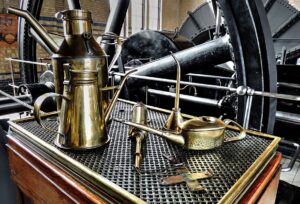
What is hydraulic lubrication?
Hydraulic oil is different than other lubricants. It is not only a lubricant but also the means by which power is transferred throughout the hydraulic system. For maximum efficiency and reliability, hydraulic oil must possess properties similar to most other lubes. These properties are: foaming resistance and air release; thermal, oxidation and hydrolytic stability; anti-wear performance; filterability; demulsibility; rust and corrosion inhibition; and viscosity in respect of its influence on film thickness.
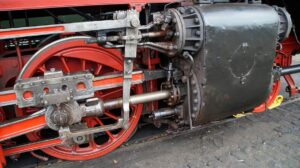
In technical terms, the ideal hydraulic fluid for transmission of power should be infinitely stiff (incompressible) and have a constant viscosity of around 25 centistokes regardless of its temperature. But such a fluid does not exist.
Bulk modulus is an inherent property of the base oil. This cannot be improved with additives. The viscosity index (VI), however, can be improved upon. This is done by using high VI base stocks such as synthetics. Also, polymers called Viscosity Index Improvers can be added to the formulation.
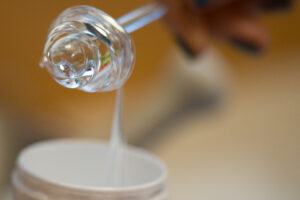
Viscosity
It was in the 1940s that Viscosity Index Improvers were first used to make multi-grade engine oils. Nowadays, this common and much used technology is used to make high VI oils for other applications, including automotive transmission fluids and manual transmission gear oils. It has to be mentioned, though, that the VI improvers used in oils for the above applications are not typically shear stable when used in modern hydraulic systems. Shear Stability is a measure of the resistance of an oil to change in viscosity, caused by the oil being subjected to mechanical stress or shear.
The result of this mechanical stress is a reduction in viscosity, or thinning. Multi-grade engine oils, high Viscosity Index (HVI) Hydraulic fluids and certain gear oils are usually formulated using Polymeric thickeners (Viscosity Index Improvers) to give better Viscosity Index characteristics.

There are several components in a hydraulic system, and they are vital because they are critical for operation and carry a high cost of repair. Pumps and valves are key components. Several different configurations for pumps must be treated on a case-to-case basis from a lubrication perspective.
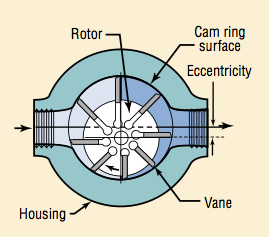
Vane pumps come in many variations. All of them work on similar design principles – where a slotted rotor is coupled to the drive shaft and turns inside a cam ring that is offset to the drive shaft. The vanes are inserted into the rotor slots. They follow the inner surface of the cam ring as the rotor turns.
The vanes and the inner surface of the cam rings are always in contact. They are, therefore, subject to huge wear and tear. As the two surfaces wear away due to friction, the vanes are gradually displaced from their slot. Vane pumps deliver a steady flow at a high cost and function at an optimum viscosity range at operating temperature. In critical, high pressure hydraulic systems, where contamination and fluid quality cannot be controlled, vane pumps are not suitable.
The performance of the fluid’s anti-wear additive is generally very important with vane pumps.
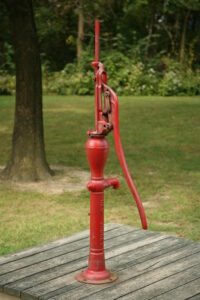
Piston pumps are available in fixed and variable displacement designs – just like all other hydraulic pumps. These are usually the most versatile and rugged components and come a range of options for any type of system. Piston pumps can operate at pressures beyond 6000 psi, produce less noise and are highly efficient.
Piston pumps operate at a normal fluid viscosity range of 10 to 160 cSt and tend to resist wear better than other pump types.
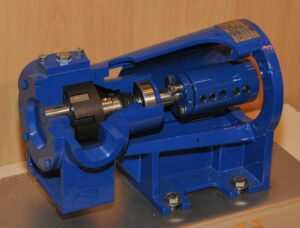
Commonly available in two types, internal and external, each gear pump type further has a variety of subtypes. However, all of them build up flow by carrying fluid between the teeth of a meshing gear set. Even though generally less efficient than vane and piston pumps, gear pumps are important because they are more tolerant of fluid contamination.
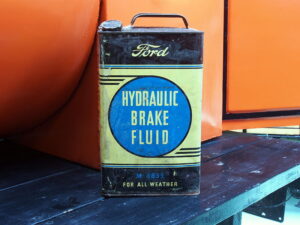
The primary function of a hydraulic fluid is to provide energy transmission through the system. This is vital for work and motion. However, modern hydraulic fluids serve several purposes – because hydraulic fluids are also responsible for lubrication, heat transfer and contamination control. When selecting a lubricant, the considerations are: viscosity, seal compatibility, base stock and the package of additives.
The 3 available varieties of hydraulic fluids are: petroleum-based, water-based and synthetics.
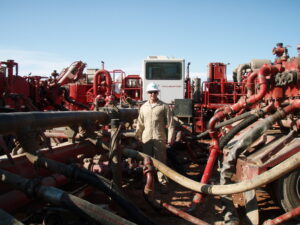
When choosing a hydraulic fluid, the following characteristics are important: viscosity, viscosity index, oxidation stability and wear resistance. These characteristics determine the operational quality of the fluid operates within the system.
Viscosity is the measure of a fluid’s resistance to flow and shear. Fluids of higher viscosity flow with higher resistance compared to fluids of low viscosity. Very high viscosity can contribute to high fluid temperature and greater energy consumption and can damage a system just as fluids of very low viscosity. Therefore, viscosity is an important consideration right at the outset.
Viscosity Index is how the viscosity of a fluid alters with changes in temperature. A fluid with a high viscosity index will maintain its viscosity over a broader temperature range than a fluid of low viscosity index having the same weight. Thus, when temperature extremes are expected, high VI fluids are used. So, this is most important for outdoor hydraulic systems.
Oxidation Stability is the fluid’s resistance to the degeneration brought about by heat and caused by a chemical reaction with oxygen. This resultant oxidation reduces the life of a fluid to a great extent and leaves by-products such as sludge and varnish. Varnish is bad for the system as it interferes with valve functioning and also restricts the flow passageways.
Wear Resistance is the lubricant’s capability to lessen the rate of wear in the boundary contacts where friction takes place. This is made possible because the fluid forms a protective layer on the metal surfaces and thus prevents abrasion, scuffing and contact fatigue on the component’s surfaces.




